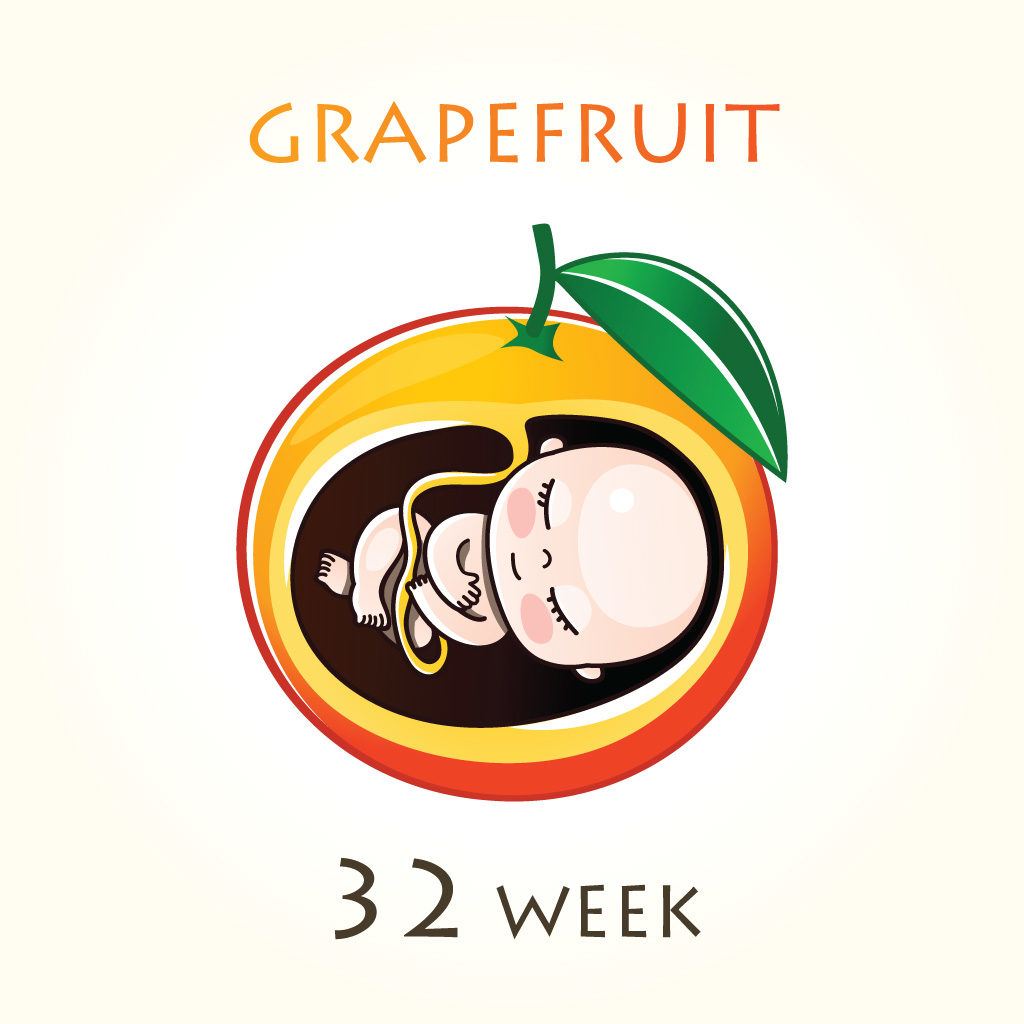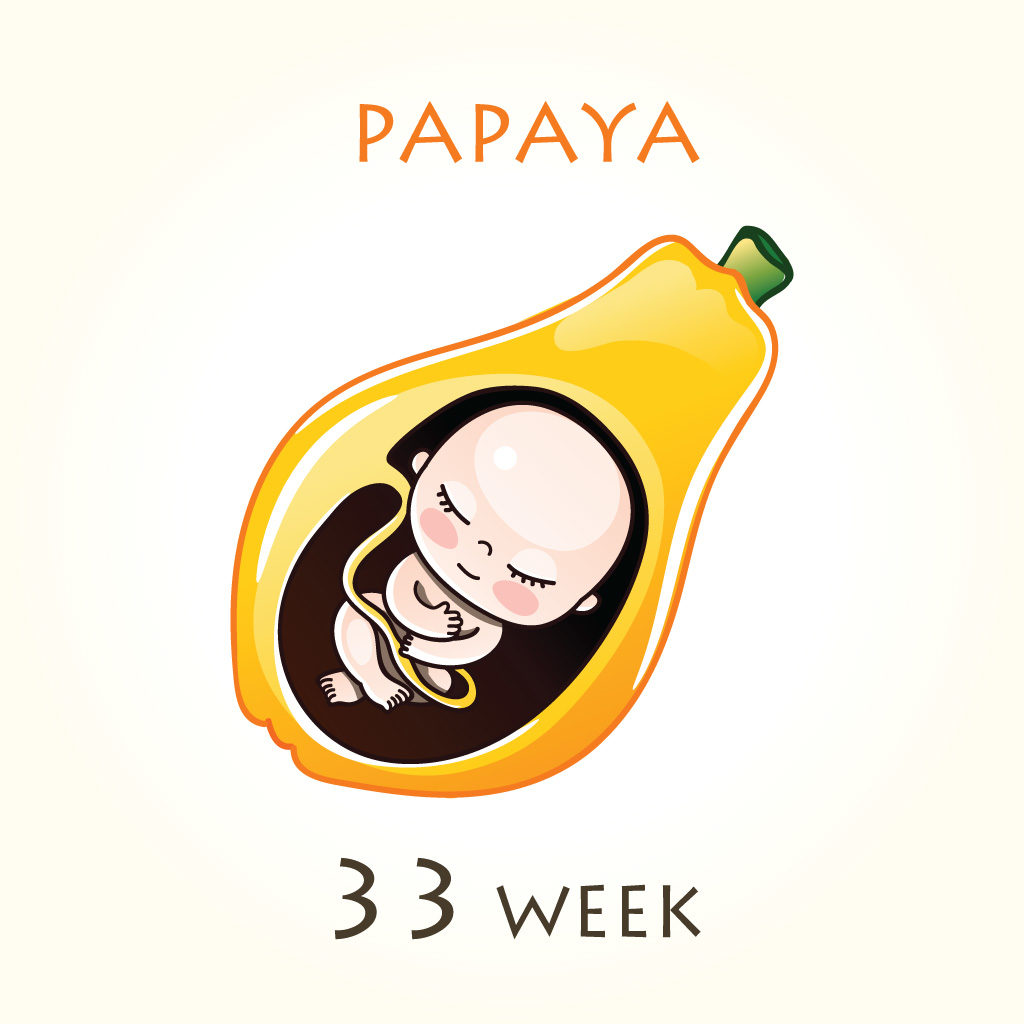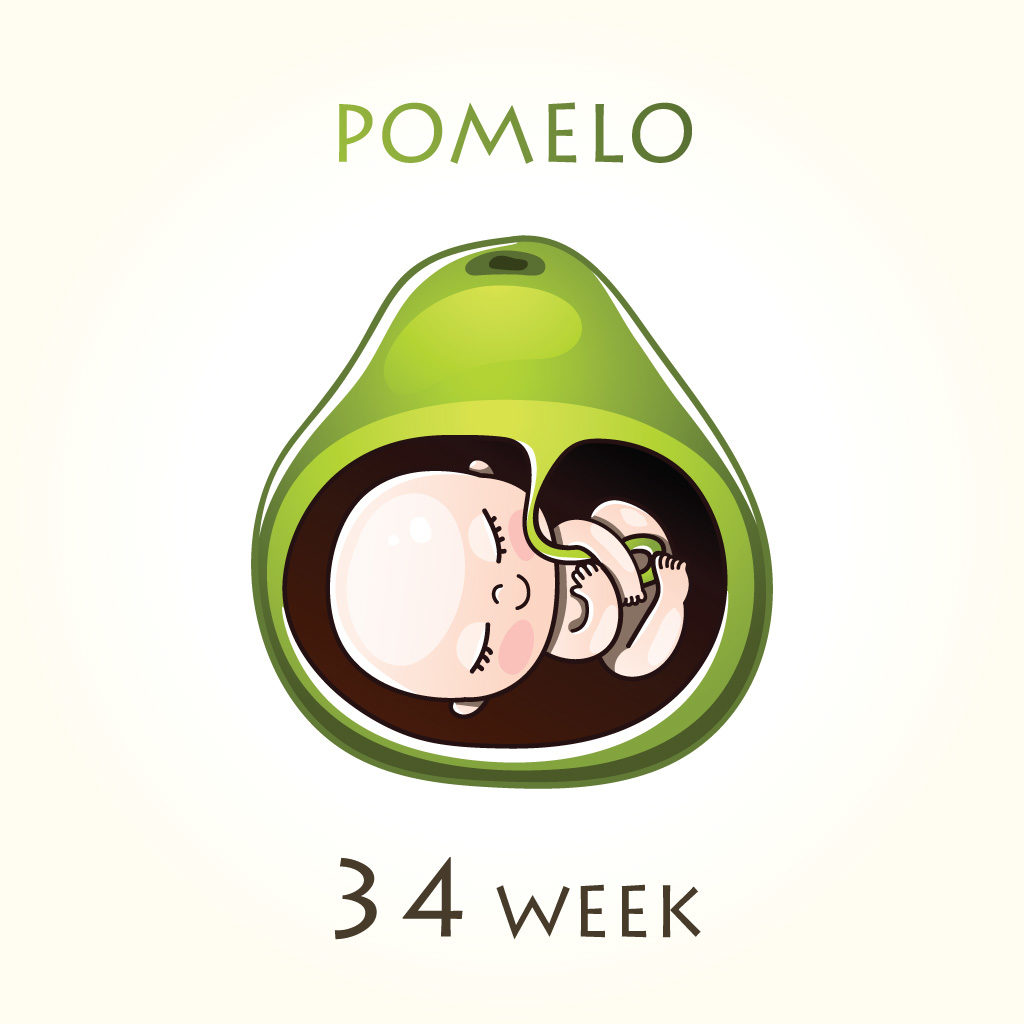Thirty-Two to Thirty-Four Week Visit
Body Changes
Heart pounding (palpitations) is occasionally a normal response that your body makes to meet your baby’s needs and pump the extra volume in your circulatory system. When you feel this pounding, make a conscious effort to relax and let go of all the tension in your body. Take a deep cleansing breath, and then breathe easily and comfortably. Decrease caffeine in your diet. If you experience pain or have a continuous problem with this, be sure to tell your physician/midwife.
Fetal Growth
Your baby weighs about 3 1⁄2 to 5 pounds and measures about 16 inches long. All organ systems are developed. However, the next two months are important periods of growth and maturity and they help assure a healthy entry into the world.



Specific Instructions for this Month
- Contact Sacred Heart Pre-admission Office at 541.686.7166 or 866.907.6329 to complete pre-registration over the phone.
- Choose a pediatrician.
Nonstress Test
Some women have a risk of having problems during pregnancy due to a medical condition and need closer monitoring. The nonstress test is one method of fetal monitoring to check the growth and health of your baby. Some of the conditions that may signal a need for a nonstress test include:
- High blood pressure
- Diabetes
- Twin pregnancy
- Post-dates (pregnancy lasting more than 2 weeks past your due date)
- Kidney or heart disease
- Fetal growth problems
The nonstress test measures the fetal heart rate in response to your baby’s own movements. Often the fetal heart rate increases when your baby moves, just as yours does when you exercise. Such changes in your baby’s heart rate are an indicator of fetal well-being.
During the nonstress test, you will lie on an exam table or sit in a recliner with belts around your abdomen. The belts are attached to ultrasound transducers. Your baby’s heart rate is measured by Doppler ultrasound. You will push a button each time you feel your baby move. This causes a tracing to be made on a paper that is recording your baby’s heart rate.
If your baby does not move for a while during the nonstress test, your baby may be asleep. A hand-held buzzer may be used by the physician, midwife, or nurse to produce sound and vibration to wake your baby and cause movement. This is harmless to your baby and will not cause you any discomfort. We also may suggest that you have something to eat or drink to stimulate your baby’s movements.
Your physician/midwife will discuss the nonstress test results with you and will determine if further testing is needed.
